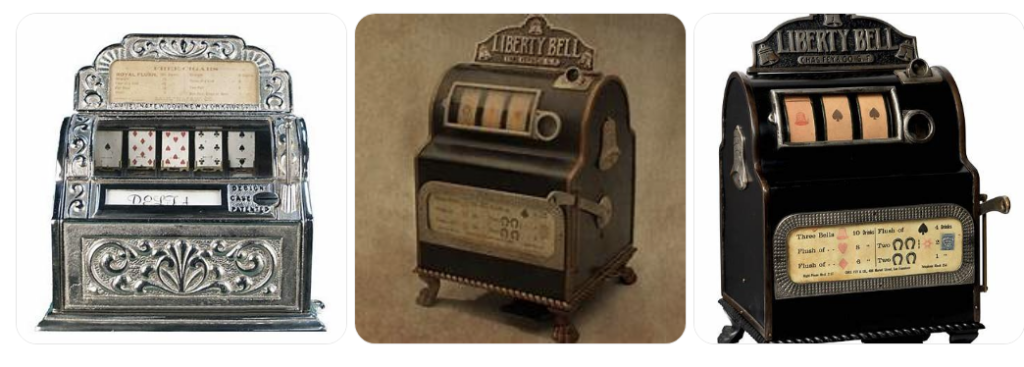The one-armed bandit slot holds a legendary place in the world of gambling, symbolizing both the thrill of chance and the evolution of gaming technology. Its nickname, derived from the mechanical lever that once powered these machines, evokes images of smoky arcades and bustling casinos. Understanding the origins, evolution, and cultural impact of the one-armed bandit slot provides insight into how gambling has transformed from a simple mechanical novelty to a global digital phenomenon.
The Origins of the One-Armed Bandit Slot
Historical Background
The journey of the one-armed bandit begins in the 1890s. The earliest conceptual precursors to slot machines appeared as novelties in bars and saloons. Sittman and Pitt of Brooklyn, New York developed a gambling machine in 1891 that served as a precursor to the modern slot machine. This poker-based device contained five drums holding a total of 50 card faces. It proved to be extremely popular rapidly, spreading to local establishments where players sought entertainment through popular card games. However, the complexity of the poker-based game made it practically impossible to create an automatic payout system for all possible winning combinations, which limited its effectiveness.
The Liberty Bell Machine
In 1895, Charles Fey, a German mechanic based in San Francisco, revolutionized the industry with his invention: the Liberty Bell. This machine featured three spinning reels, five symbols (horseshoes, diamonds, spades, hearts, and the Liberty Bell), and a fully automated payout system. The Liberty Bell’s design became the blueprint for future slot machines, and its success led Fey to open the Slot Machine Factory in 1896. Machines like the Liberty Bell, 4-11-44, and Card Bell captivated the public and laid the foundation for the modern gaming industry.
Evolution of Design
Over the decades, slot machines evolved from purely mechanical devices to sophisticated electronic systems. The characteristic lever attached to the Liberty Bell's side became the machine's defining feature. Players would pull this lever to spin the reels, and this distinctive feature eventually earned slot machines their nickname, "The One-Armed Bandit," due to the lever resembling an arm and the machines being known for quickly taking players' money.
During the electromechanical era, Bally introduced Money Honey in 1963, the first fully electromechanical slot machine that featured a bottomless hopper and could automatically pay out up to 500 coins without requiring an attendant. This advancement made the mechanical lever increasingly redundant, eventually replaced by a simple push button on modern machines. The transition to video slot machines started in the mid-1970s, utilizing electronic displays instead of mechanical reels, leading to today’s digital experience where players can choose from a wide array of games with complex mechanics.
Gameplay Mechanics of the One-Armed Bandit Slot
How Traditional Machines Work
Traditional one-armed bandit slots operated via a simple mechanism: a player inserted a coin into the slot and pulled the lever. The lever’s movement triggered the internal mechanism, causing the reels to spin and eventually stop, revealing a random combination of symbols. If the combination matched a winning pattern, the machine automatically dispensed coins. Early machines had limitations because prizes were awarded manually, often in the form of drinks or cigars.
Winning Combinations
The Liberty Bell's design established the foundational concept of winning combinations that remains central to gameplay mechanics in slots. The three reels contained five symbols each, creating multiple possible combinations. Matching symbols across a single payline determined winners, with the most valuable combination being three Liberty Bells. Over time, machines introduced more symbols and multiple paylines, increasing the number of possible winning combinations.
Cultural Significance of the One-Armed Bandit Slot
Association with Organized Crime
In the early-to-mid-20th century, slot machines became closely associated with organized crime. The profitability of these machines attracted illegal operators, who often manipulated machines to circumvent legal payout structures. As a result, the one-armed bandit received its moniker due in part to its reputation for quickly draining players’ wallets while being an instrument of financial control for criminal syndicates.
Media Representation
The one-armed bandit has been a staple in movies, television, and advertising, often symbolizing risk, temptation, and the allure of instant wealth. Notable mentions in films highlight their representation in the popular consciousness, illustrating how they encapsulate the thrill and danger of gambling. These portrayals reinforce the machine’s status as a cultural icon and play upon the feelings of nostalgia that many feel when remembering the classic gambling experience.
Modern Versions of the One-Armed Bandit Slot
Online and Video Slots
Today, the legacy of the one-armed bandit lives on in online and video slots. While the physical lever has largely disappeared, replaced by digital buttons, the core mechanics remain the same. Modern slots offer enhanced graphics, sound, multiple paylines, and bonus features. Many online slots pay homage to the original Liberty Bell design, incorporating classic symbols and retro aesthetics within innovative gameplay structures.
Popular Modern Games
Several contemporary slot games draw inspiration from the one-armed bandit theme, such as titles from developers like IGT and Yggdrasil Gaming. These games often blend nostalgia with engaging gameplay mechanics. Players find themselves immersed in a gaming experience that honors the past while pushing forward with new technology, further connecting them with the heritage of the one-armed bandit legacy.
Conclusion
The journey of the one-armed bandit slot machine from its inception as a mechanical device to its transformation into online and video game formats exemplifies the evolution of gambling culture. These machines have remained popular throughout their lengthy history, shaping the landscape of gaming while maintaining their cultural significance. The one-armed bandit has become more than just a machine; it is a symbol of chance, excitement, and the enduring allure of gambling.






